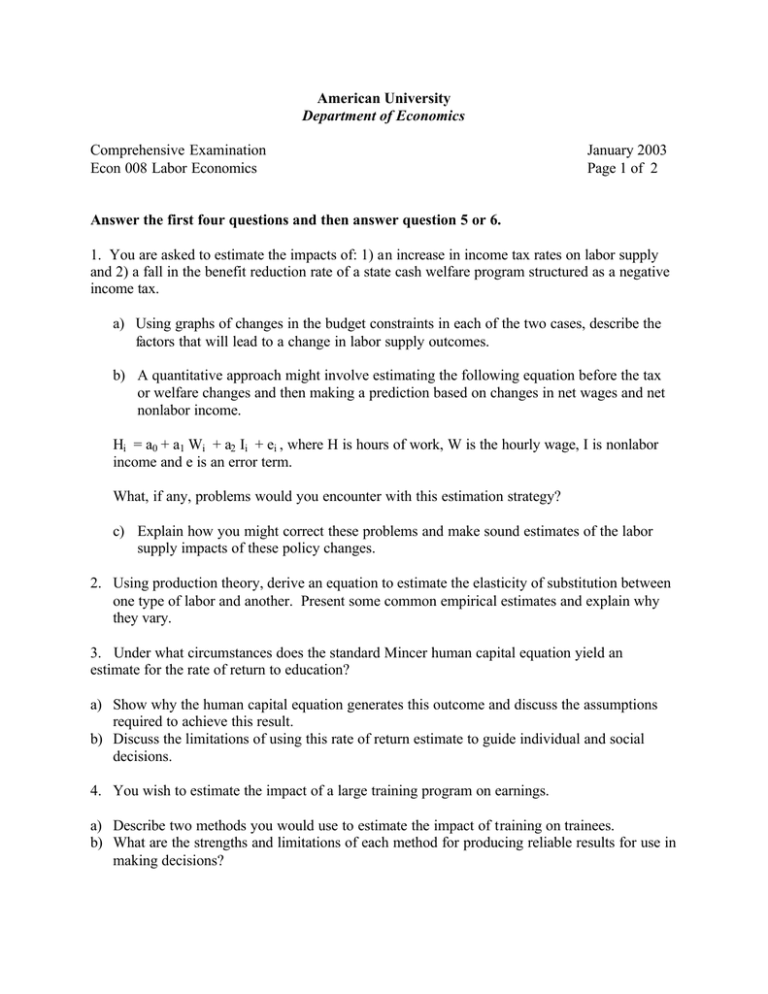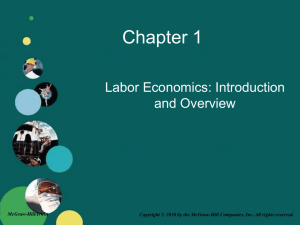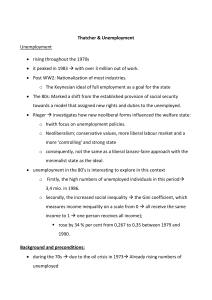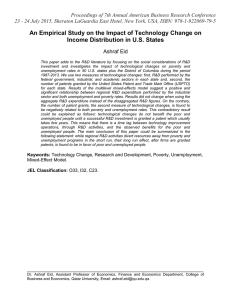American University Department of Economics
advertisement

American University Department of Economics Comprehensive Examination Econ 008 Labor Economics January 2003 Page 1 of 2 Answer the first four questions and then answer question 5 or 6. 1. You are asked to estimate the impacts of: 1) an increase in income tax rates on labor supply and 2) a fall in the benefit reduction rate of a state cash welfare program structured as a negative income tax. a) Using graphs of changes in the budget constraints in each of the two cases, describe the factors that will lead to a change in labor supply outcomes. b) A quantitative approach might involve estimating the following equation before the tax or welfare changes and then making a prediction based on changes in net wages and net nonlabor income. Hi = a0 + a1 Wi + a2 Ii + ei , where H is hours of work, W is the hourly wage, I is nonlabor income and e is an error term. What, if any, problems would you encounter with this estimation strategy? c) Explain how you might correct these problems and make sound estimates of the labor supply impacts of these policy changes. 2. Using production theory, derive an equation to estimate the elasticity of substitution between one type of labor and another. Present some common empirical estimates and explain why they vary. 3. Under what circumstances does the standard Mincer human capital equation yield an estimate for the rate of return to education? a) Show why the human capital equation generates this outcome and discuss the assumptions required to achieve this result. b) Discuss the limitations of using this rate of return estimate to guide individual and social decisions. 4. You wish to estimate the impact of a large training program on earnings. a) Describe two methods you would use to estimate the impact of training on trainees. b) What are the strengths and limitations of each method for producing reliable results for use in making decisions? c) In what cases might the impacts of training you observe equal, higher, and lower than the social impact of training? Answer 5 or 6. 5. a) Write your assessment of the following quotation. “With 6 million unemployed people and job growth of only .2 million per month, the typical unemployed person has a very low chance of finding a job in a particular month.” b) Explain how unemployment insurance might or might not generate substantial real resource costs, depending on the causes of unemployment. 6. Present and explain two competing theories of discrimination against black Americans and women. How do market forces exacerbate or reduce discrimination under each theory? What analysis of data would provide a solid test of the theories? What is the state of the evidence developed to this point testing one or more theories?









